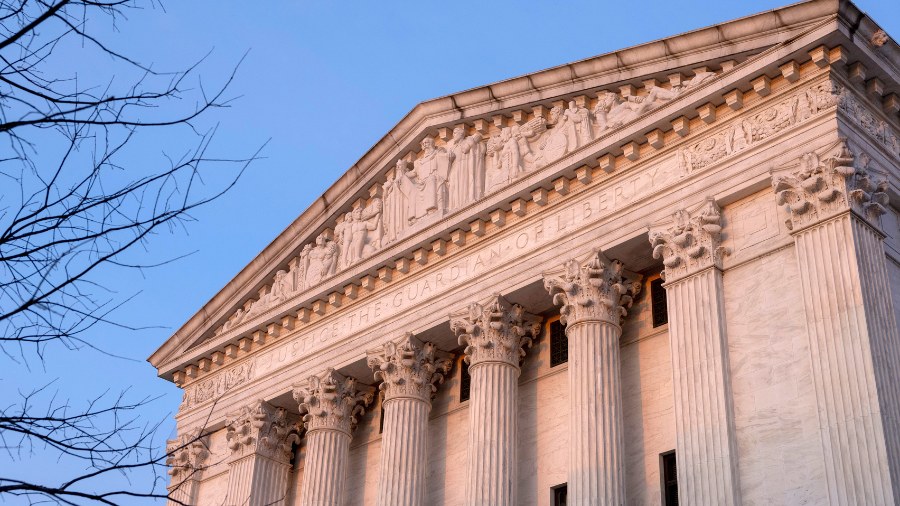California releases its own plan for Colorado River cuts
Jan 31, 2023, 5:22 AM | Updated: 7:53 pm

FILE - The Colorado River passes through Grand Junction, Aug. 24, 2022, in Mesa County, Colo. California released a plan Tuesday, Jan. 31, 2023, detailing how western states reliant on the Colorado River could save more water, a day after it was the only state that didn't sign a proposal agreed to by six states in the basin. (Hugh Carey/The Colorado Sun via AP, File)
(Hugh Carey/The Colorado Sun via AP, File)
SACRAMENTO, Calif. (AP) — California released a plan Tuesday detailing how Western states reliant on the Colorado River should save more water. It came a day after the six other states in the river basin made a competing proposal.
In a letter to the U.S. Bureau of Reclamation, California described how states could conserve between 1 million and nearly 2 million acre feet of water through new cuts based on the elevation of Lake Mead, a key reservoir.
Its plan did not account for water lost to evaporation and during transportation — a move sought by the other states that would mean big cuts for California.
The 1,450-mile river (2,334-kilometer) serves 40 million people across the West and Mexico, generating hydroelectric power for regional markets and irrigating nearly 6 million acres (2,428 hectares) of farmland.
A multi-decade drought in the West worsened by climate change, rising demand and overuse has sent water levels at key reservoirs along the river to unprecedented lows. That has forced federal and state officials to take additional steps to protect the system.
California’s plan and the separate methods outlined by states Monday came in response to Reclamation asking them last year to detail how they would use between 15% and 30% less water. The federal agency operates the major dams in the river system.
All seven states missed that deadline last August. Six of them regrouped and came to an agreement by the end of January. California was the the lone holdout to that agreement, and responded Tuesday with its own plan.
Unlike the other states’ plan, California’s does not factor the roughly 1.5 million acre feet of Colorado River water lost to evaporation and transportation.
Instead, it proposes reducing water taken out of Lake Mead by 1 million acre feet, with 400,000 acre feet coming from its own users. The state previously outlined that level of cuts in October. Arizona would bear the brunt of bigger cuts — 560,000 acre feet — while Nevada would make up the rest. Those numbers are based on discussions from prior negotiations, California’s letter said.
An acre foot is enough water to supply two to three U.S. households for a year.
The Arizona Department of Water Resources said it was still reviewing California’s proposal and didn’t have an immediate comment.
But Tom Buschatzke, the department’s director, said earlier Tuesday that water managers across the basin couldn’t reach agreement with California on cuts, even at the broader state level.
“The big issues are what does the priority system mean, what does the junior priority mean and how does that attach to that outcome of who takes what cut?” he said. “That was the issue over the summer, that was the issue over the fall, that’s still the issue.”
California has the largest allocation of water among the seven U.S. states that tap the Colorado River. It is also among the last to face water cuts in times of shortage because of its senior water rights.
That has given the state an advantage over others in talks that spanned months over how to cut water use.
California water officials have often repeated that any additional water cuts must be legally defensible and in line with western water law that honors its water rights.
JB Hamby, chairman of the Colorado River Board of California and a board member of the Imperial Irrigation District, indicated California may file a lawsuit if the federal government attempts to count for evaporative losses.
“The best way to avoid conflict and ensure that we can put water in the river right away is through a voluntary approach, not putting proposals that sidestep the Law of the River and ignore California’s senior right and give no respect to that,” he said.
Existing agreements only spell cuts when Lake Mead’s elevation is between 1,090 feet (332 meters) and 1,025 feet (312 meters). If it drops any lower than 1,025 feet, California’s plan proposes even further cuts based on the so-called Law of the River — likely meaning Arizona and Nevada would bear the brunt of them. Those cuts are designed to keep Lake Mead from reaching “dead pool,” when it could no longer pump out water to farms and cities including Las Vegas, Los Angeles and Phoenix.
The reservoir’s current elevation is around 1,045 feet.
In total, California’s plan could save between 1 million and 2 million acre-feet of water based on the elevation levels at Lake Mead, from which Arizona, California, Nevada and Mexico draw their share of the river.
Adel Hagekhalil, general manager for the Metropolitan Water District of California, the nation’s largest water supplier, said it was important to protect key reservoirs “without getting mired in lengthy legal battles.”
Hagekhalil and other water managers pointed to numerous efforts the state has made to drastically reduce its water usage by making agricultural and urban water use more efficient.
“California knows how to permanently reduce use of the river — we have done it over the past 20 years, through billions of dollars in investments and hard-earned partnerships,” he said in a statement. “We can help the entire Southwest do it again as we move forward.”
The new proposals do not change states’ water allocations immediately — or disrupt their existing water rights. Instead, they will be folded into a larger proposal Reclamation is working on to revise how it operates Glen Canyon and Hoover Dams — behemoth power producers on the Colorado River.
Despite California’s inability to reach agreement with the other six states so far, the parties said they hope to keep talking.
“We’re not going to stop the discussions,” said Buschatzke of Arizona, “and maybe we come to an agreement and maybe we won’t.”
___
Naishadham reported from Washington, D.C. AP writer Felicia Fonseca contributed from Flagstaff, Arizona.
___
The Associated Press receives support from the Walton Family Foundation for coverage of water and environmental policy. The AP is solely responsible for all content. For all of AP’s environmental coverage, visit https://apnews.com/hub/climate-and-environment
Copyright © The Associated Press. All rights reserved. This material may not be published, broadcast, rewritten or redistributed.














